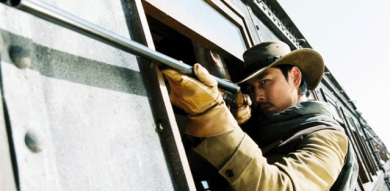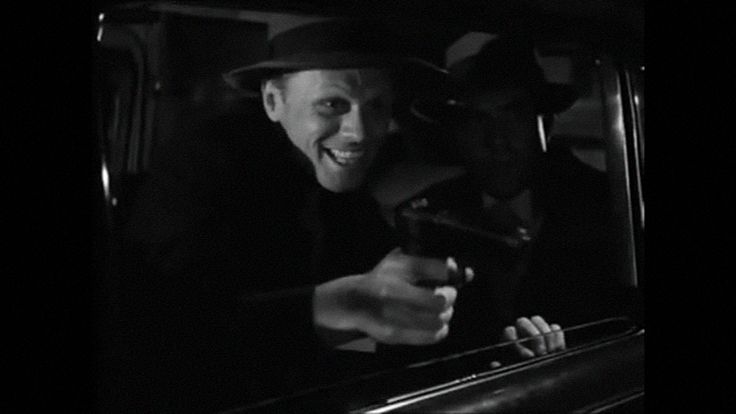
While The Last Stand didn’t make much of an impression on the box office, it still left many of us here at Sound On Sight praising director Jee-woon Kim’s effort. As the first Korean auteur to direct a large-scale Hollywood movie, Kim takes inspiration from classic American westerns, specifically Howard Hawks’ Rio Bravo. Apart from classic westerns, there are a few cult movies that fans of The Last Stand should take interest in. Here are two, that I recommend.
****

1: Joheunnom nabbeunnom isanghannom (The Good, The Bad, The Weird)
Directed by Jee-woon Kim
Screenplay by Jee-woon Kim and Min-suk Kim
2008, South Korea
A decade after making his incredible debut film, The Quiet Family (later remade by Takashi Miike as The Happiness of the Katakuris), Jee-woon Kim had established himself as one of South Korea’s most beloved directors. His hard work didn’t go unnoticed by studio execs, and Kim was awarded the honour of making what was at the time, Korea’s most expensive production to date.
The Good, The Bad, The Weird is a technical wonder, blazing with energy and death-defying stunts. Ji-woon injects it with so much excess of style, slapstick comedy and ridiculously fun set pieces, that it is almost impossible to look away. This is a Wild West story transplanted to one of the most exotic corners of the globe. There is an unforgettable train holdup, an extended gun battle, a 15-minute epic chase through the desert, a bloody knife duel and so much more. Kim’s inventive action sequences develop like short films with each action setting up the next scene. This unapologetically goofy and brilliantly paced Spaghetti Western is a must see, thanks to it’s all star cast, striking widescreen visuals, expert mise-en-scène, and deft direction. In true Leone fashion, the movie boils down to a Mexican stand-off with a surprising twist.

2: Assault on Precinct 13
Directed by John Carpenter
Screenplay by John Carpenter
1976, USA
Following the release of his first feature, Dark Star, John Carpenter was given carte blanche on his next film. The only catch, was he had to stick within the limitations of a very small budget. Carpenter wanted to direct a Western, but he knew he wouldn’t have enough resources to make a period piece, so instead he wrote the script for Assault on Precinct 13 – a highly stylized, modern-day take on Rio Bravo, with a nod to Night of the Living Dead.
Although not a straight remake of Rio Bravo, the plot still owes a lot to the classic Howard Hawks western. An officer, with the help of a secretary, and a convicted killer, are forced to fight off a mob of murderous gang members while stuck in a soon-to-be-shutdown police station, now under siege. Assault is a remarkably confident sophomore effort, considering Carpenter wrote the screenplay, edited the finished product, and composed the music for the film. And while it was ins’t his first feature, Assault on Precinct 13 was technically John Carpenter’s first incursion into professional filmmaking.

As an editor, Carpenter does an excellent job, tightly knitting the action in ways which blend an old fashioned patient approach with more contemporary methods. Assault on Precinct 13 is a tense, tightly constructed series of action and escalating tension.Carpenter quickly establishes his characters without wasting time upon unnecessary exposition. It is a narrative designed to quickly grab your attention and hold on to it for 90 minutes. (It should be noted, Carpenter used the pseudonym of John T. Chance for his film editor’s credit, which was the name of John Wayne’s character in Rio Bravo).
As a director, Carpenter wrapped up principle shooting in just 20 days, an unmistakable success, given the lack of experience behind the camera. Of all of Carpenter’s films, Assault has one of the strongest social commentaries, and Carpenter allows the film to manipulate the audience’s emotions without insulting their intelligence. There is no mistaking the modern racial and sexual moral codes of behaviour encoded in this ultra-gritty, urban siege thriller. The Street Thunder Gang are no different than the zombies in Romero’s classic, and the occupants held up within the police station are forced to fight side by side, regardless of age, sex or race.
As composer, Carpenter’s moody synthesizer sounds are minimalist but bleak. The music is simple, but suits the steady pacing and is incredibly effective in helping ratchet up the tension. Reunited with Douglas H. Knapp, his cinematographer on Dark Star, Assault features superb photography, best absorbing the space of the location, and allowing the camera itself, to appear as the point of view of an additional occupant. Assault is a masterclass in tight, tense low-budget action filmmaking, where not a single frame is wasted in conveying suspense and drama. Even in the earlier scenes which run longer than necessary, by design, generate a seductive air of impending doom. Assault is lean, sometimes shocking, tense, taut and ranks as a cult action classic. This is essential viewing for anyone tracing the career of John Carpenter.
– Ricky D

